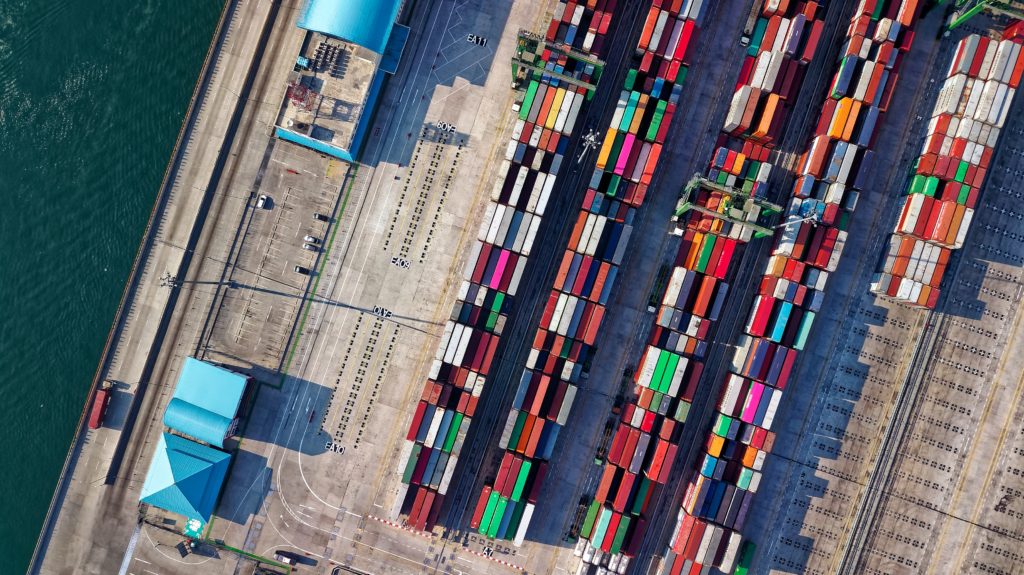
Summary
The onset of COVID-19 has resulted in rapid and massive shifts in consumer demand creating a tsunami as shoppers stock pile non-discretionary essentials such as shelf-stable food, toiletries, cleaning suppliers and pet food, and virtually ignore discretionary items such as cosmetics and other luxury items.
Retailers and manufacturers, in turn, are having to adapt and retool virtually every aspect of their supply chain in order to meet the spikes in demand on essential items while simultaneously prioritizing the health and safety of their employees.
The following articles and summary take a deep dive into the key actions manufacturers and retailers are forced to take to address new and drastic challenges around getting much-needed goods to store shelves:
- Supply-chain recovery in coronavirus times—plan for now and the future
- Five actions retail supply chains can take to navigate the coronavirus pandemic
- COVID-19: five priorities for retail supply chain
Advantage Perspective
These articles reveal three focus areas of Supply Chain that can set retailers and suppliers up for success as they navigate their way through this evolving crisis and beyond: Collaboration, Adaptability and Technology.
Collaboration and Information Sharing
- Manufacturers and retailers need to jointly re-focus and re-prioritize replenishment efforts to rapidly and efficiently flow stock to shelves rather than set their sites on product variety and promotions.
- The role of Joint Business Planning partners and “category champions” is taking on increased importance, as retailers invite their strategic and most trusted suppliers to daily meetings to work through the options for securing an adequate supply of essential high-demand items.
- The importance of transparency and information sharing rises to new levels as business partnerships put speed and agility ahead of veiling proprietary insight. Business partnerships based on trust will enable sensitive as well as general information to be used to collectively to address gaps in the flow of goods to meet consumer needs as quickly as possible.
Adaptation and Agiliy
- Now, more than ever, maintaining flexibility and agility within your supply chain and logistics models is essential for leveling the peaks of disruption in essential supplies.
- Retailers can demonstrate flexibility by easing payment terms, widening delivery-appointment windows, and relaxing on time and in full (OTIF) requirements.
- Manufacturers can bend by showing flexibility in distribution pathways; bypassing distribution centers and shipping goods directly to stores as well as simplifying assortments and packaging processes.
Technology
- The COVID-19 crisis has reinforced the importance of a digitized and integrated supply chain management system that shores up capabilities in risk assessment and anticipation, achieves greater visibility and coordination across the supply chain, and manages issues that arise from growing product mix complexity.
Reviewing our own research for 2019 across 42 markets globally, several metrics provide suppliers and retailers with a view of how they performed on these key measures last year and how they were positioned to adapt their supply chains in light of the onset of COVID-19.
For suppliers, feedback from retailers’ highlights “Collaborative Forecasting” as a measure of how willing you are to share and work together to manage the flow of stock in the end-to-end supply chain.
For supplier feedback on retailers, “Investment in Supply Chain Management Technology/Process” reveals how well equipped you are to deal with shocks and risks in supply chain as a crisis or other unexpected situation occurs.
Click Here to see how suppliers rated retailers and how important to suppliers “Invests in Supply Chain” was in 2019 across the globe.
Click Here to see how retailers rated suppliers and how important to retailers “Collaborative Forecasting” was in 2019 across the globe.
As we report 2020 feedback in the coming months, a secondary look at these metrics will show how companies performed and who was able to adapt and flex in the wake of the COVID-19 crisis as well as across the year.
Supporting Article
The Coronavirus Struck Hard, Leaving Wholesalers to Pursue New Ways of Distributing Their Products
Summary
The coronavirus crisis has hit the food industry hard. As citizens have observed advice to stay indoors and only venture outside when absolutely necessary, restaurants and pubs have shifted to take-out and delivery-only models. Grocery retailers, while keeping their doors to the public open, have shifted standards and policies around supply chains and inventory, making the traditional visit to the supermarket very different than usual for consumers in terms of the assortment available.
Shopping for food and non-food products has become increasingly difficult in this crisis period as grocery retailers have been overwhelmed with demand leaving swaths of their shelves empty. This result has left producers and wholesalers to seek new ways to keep their business alive and reach new and existing customers, with many starting to offer Direct-to-Consumer (D2C) delivery services. Wholesalers, in particular, have typically relied mainly on a Business-to-Business (B2B) model. This has been the norm for some time now, as there are specific requirements for quantity, quality and minimum order values. However, wholesalers are beginning to deal directly with the public through phone, e-commerce and social media D2C models. Leading the trend spurred by the crisis are a number of Wholesale businesses in the UK.
Advantage Perspective
It’s clear that grocery retailers are under immense pressure and duress in this crisis. Wholesaler’s adoption of D2C has proven to be a very effective interim solution to help bypass the grocery stores, allowing these retailers to stock up on consumer essentials to meet higher consumer demand. After a high-impact global shock, we often experience a wave of ‘new normal’ across several industries. Our projection is that following the crisis, the surge in D2C will remain strong. Before the crisis, D2C was gaining increased relevance due to greater control over supply chains, scalability, targeting the needs of specific audiences, as well as leveraging e-commerce technology. In this crisis, D2C has become even more appealing as a vertical to invest in, due to shifting revenue strategies, overall business uncertainty, and the rapidly changing consumer shopping habits.
From an industry perspective, retailers continue to leverage their strength of selling and reaching consumers most effectively. We believe that the traditional Supplier and Retailer relationships will still hold crucial relevance both during and after the crisis. These current D2C efforts can be thought of as an outcome of suppliers and retailers stepping up together and using rigorous customer focus to ensure consumers get what they need most at this time. This further emphasizes the foundational pillar that needs to be in place to win the D2C game; suppliers and retailers will need to maintain and develop a solid base of trust between themselves and with their consumers by working to meet their expectations during the COVID-19 crisis and then exceeding them once things revert back to “normal”.
Sources
- UK food wholesalers are pivoting to direct-to-consumer in the coronavirus crisis – will it work?
- The Domino Effect: 5 Ways Coronavirus Will Forever Change Retail
- Specialized Online Retailers On Horizon As COVID-19 Continues To Drive Direct-To-Consumer Sales
- How the COVID-19 Pandemic Is Influencing Consumer Behavior
- Why Not Just Sell Direct?
- Restaurant Suppliers Are Opening Up to the Public to Keep Their Businesses Alive
- UK food wholesalers move into direct selling to consumers
- Ecommerce 101 + The History of Online Shopping: What The Past Says About Tomorrow’s Retail Challenges
- Coronavirus myth-busting: The truth about empty shelves and toilet paper shortages





